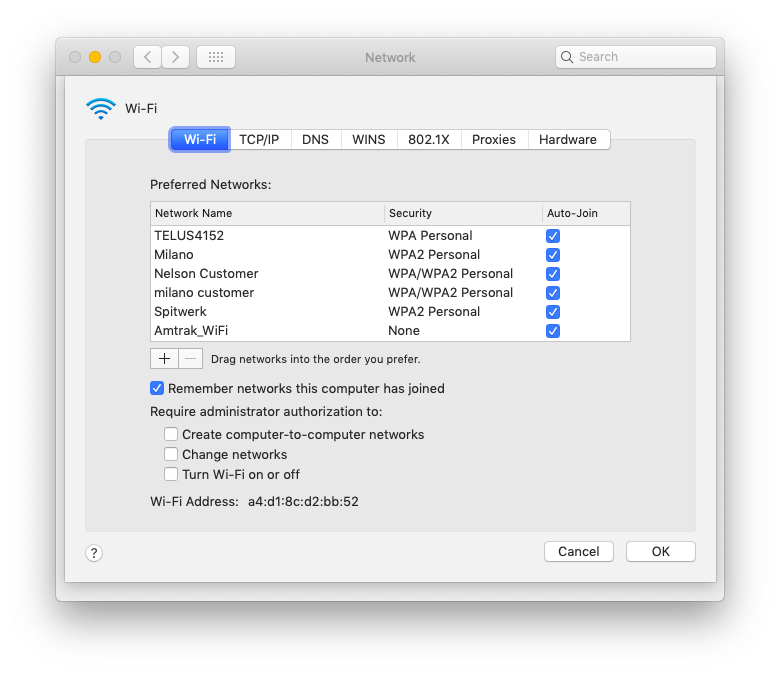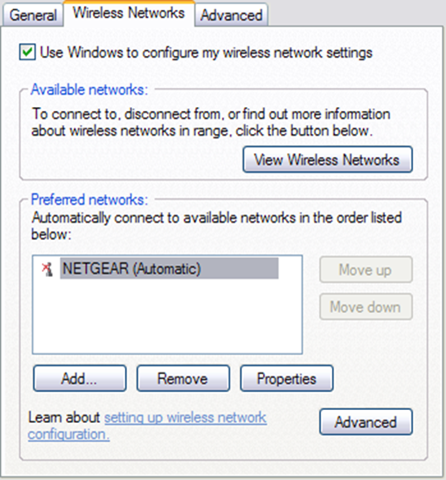

- #MANAGE WIRELESS NETWORK CONNECTIONS FOR MAC OS X HOW TO#
- #MANAGE WIRELESS NETWORK CONNECTIONS FOR MAC OS X PASSWORD#
- #MANAGE WIRELESS NETWORK CONNECTIONS FOR MAC OS X WINDOWS#
If you want, you can configure some security settings with the profile to prevent it being removed by users. The identifier is 8 characters – 4 characters – 4 characters – 12 characters in length. You’ll want to give your profile a name, set an identifier, enter your organization and a description. Once installed on your machine, you’ll want to create a New Profile. mobileconfig profileįirst, you’ll need to grab the latest version of Apple Configurator from the Mac App Store. Process for Machine Authentication on Macs 1) Create a. If you are considering this as a Wi-Fi deployment solution for your Macs, you’ll definitely want to talk to your Network Admin. We’re an Aruba shop and use Clearpass Policy Manager and a variety of roles which determine what VLAN a machine gets dropped into when it successfully authenticates. Unfortunately, I can’t speak to the intricacies here.
The other crucial piece to all of this is on the network-side of things.
#MANAGE WIRELESS NETWORK CONNECTIONS FOR MAC OS X PASSWORD#
We’ll use this unique device password to authenticate the computer on the network. The -s specifies the particular service you’re interested in, while the -w only returns the password for the matched item. Sudo security find-generic-password -s "/Active Directory/YOURFOREST" -w /Library/Keychains/System.keychain Using the built-in macOS security binary, you can call the password contained in this Keychain item with the following command: You’ll notice in the image above, that the account is in the format of hostname$. View AD Binding & System KeychainĪs part of the binding process on a Mac, an entry is added to the System Keychain, which contains a unique password for the object to authenticate with AD. Even if you still bind like us, you can still use NoMAD. There is a great open source tool called NoMAD which can get you what you want from AD but notably without the bind. There’s a lot of extra things AD gets you outside of central user management & authentication that most environments simply don’t need. If you don’t currently bind to AD however, the recommendation generally is to not bind. This has a number of benefits, including being able to add the computer to groups, assign policies, grant and limit access, etc., all from one centralized location. If you hear anyone talk about the process of “binding” to AD, s/he is fundamentally talking about taking a device, establishing a network connection to a directory, and adding it to a domain as an object.

mobileconfig profile and script as a postinstall script in an installer PKG. While I myself did not come up with this solution, I’ve developed a more streamlined process for deploying our template. mobileconfig profile, and then installs the profile on the machine.
#MANAGE WIRELESS NETWORK CONNECTIONS FOR MAC OS X WINDOWS#
Windows computers have the benefit of being able to utilize machine authentication, but this functionality unfortunately isn’t natively available on Macs. If you are an environment that uses Active Directory, or another network account system, you need to make sure that your Macs are always online so users can login. To assign network priority, drag the most important one(s) to the top of the list.How do you ensure regardless of a user being logged in a given Mac that your machines are connected to your Wi-Fi network? If for some reason you want to forget all networks, pressing cmd + A works to select all followed by clicking the – button. You can select multiple networks by holding the command key while clicking and batch the process 😄. Select a network you’d like to forget and click the “-” icon as shown below.
#MANAGE WIRELESS NETWORK CONNECTIONS FOR MAC OS X HOW TO#
We’ll also look at how to set priority levels for networks. In addition to manually forgetting wireless networks, we’ll dive into how to adjust your Mac’s settings on how it handles discovering and connecting to new networks. Whether you want to do some general tidying up, or have a specific network you want to forget, follow along below. Over time, your Mac will likely build up a large amount of networks that it has connected to.


 0 kommentar(er)
0 kommentar(er)
